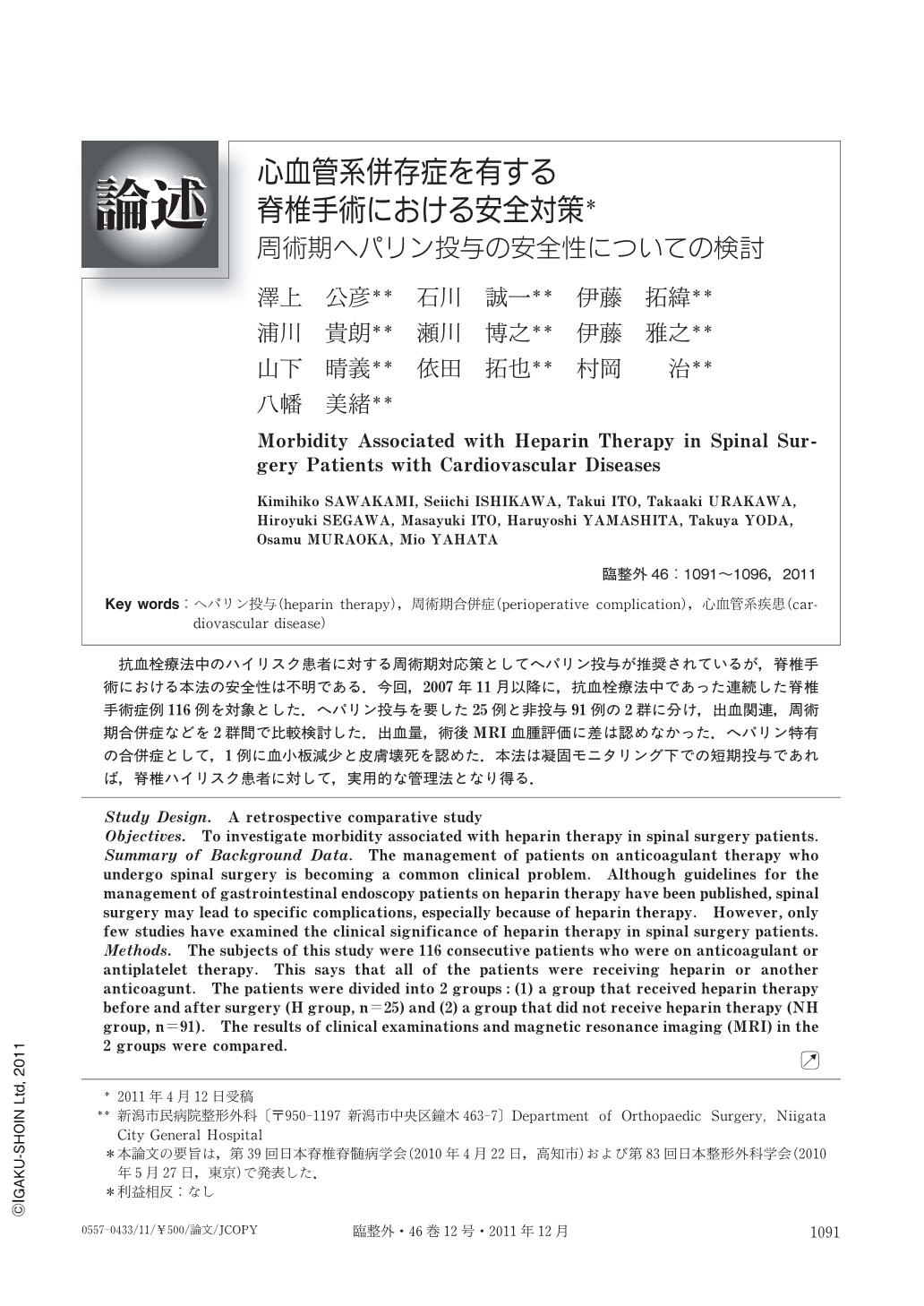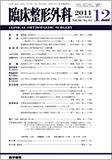Japanese
English
- 有料閲覧
- Abstract 文献概要
- 1ページ目 Look Inside
- 参考文献 Reference
抗血栓療法中のハイリスク患者に対する周術期対応策としてヘパリン投与が推奨されているが,脊椎手術における本法の安全性は不明である.今回,2007年11月以降に,抗血栓療法中であった連続した脊椎手術症例116例を対象とした.ヘパリン投与を要した25例と非投与91例の2群に分け,出血関連,周術期合併症などを2群間で比較検討した.出血量,術後MRI血腫評価に差は認めなかった.ヘパリン特有の合併症として,1例に血小板減少と皮膚壊死を認めた.本法は凝固モニタリング下での短期投与であれば,脊椎ハイリスク患者に対して,実用的な管理法となり得る.
Study Design. A retrospective comparative study
Objectives. To investigate morbidity associated with heparin therapy in spinal surgery patients.
Summary of Background Data. The management of patients on anticoagulant therapy who undergo spinal surgery is becoming a common clinical problem. Although guidelines for the management of gastrointestinal endoscopy patients on heparin therapy have been published, spinal surgery may lead to specific complications, especially because of heparin therapy. However, only few studies have examined the clinical significance of heparin therapy in spinal surgery patients.
Methods. The subjects of this study were 116 consecutive patients who were on anticoagulant or antiplatelet therapy. This says that all of the patients were receiving heparin or another anticoagunt. The patients were divided into 2 groups:(1) a group that received heparin therapy before and after surgery (H group, n=25) and (2) a group that did not receive heparin therapy (NH group, n=91). The results of clinical examinations and magnetic resonance imaging (MRI) in the 2 groups were compared.
Results. There were no significant differences between the 2 groups in baseline data. Comorbidities in both groups included valvular heart disease, atrial fibrillation, angina pectoris/myocardial infarction, and cerebral infarction. Mean intraoperative and postoperative blood loss in the H group were 324 ml and 536 ml, respectively, and the corresponding values in the NH group were 431 ml and 449 ml, respectively. MRI of all patients was performed within 10 days after surgery and T2-weighted images in the axial plane were examined for evidence of an epidural hematoma. Although the proportion of patients with an epidural hematoma, detected by MRI was higher in the H group than in the NH group (71% vs. 64%), none of the patients in either group required revision surgery because of intolerable pain or muscle weakness. Thrombocytopenia and skin necrosis were observed as complications of the heparin therapy in 1 patient in the H group (4%). The rate of recovery of the Japanese Orthopaedic Association (JOA) scores was significantly lower in the H group than in the NH group (35% vs. 57%), suggesting that patients with very severe cardiovascular disease may be at a risk of complication by peripheral artery disease.
Conclusion. Heparin therapy may be a feasible and safe perioperative treatment for patients with cardiovascular disease who undergo spinal surgery, provided it is administered on a short-term basis under strict INR monitoring.

Copyright © 2011, Igaku-Shoin Ltd. All rights reserved.


